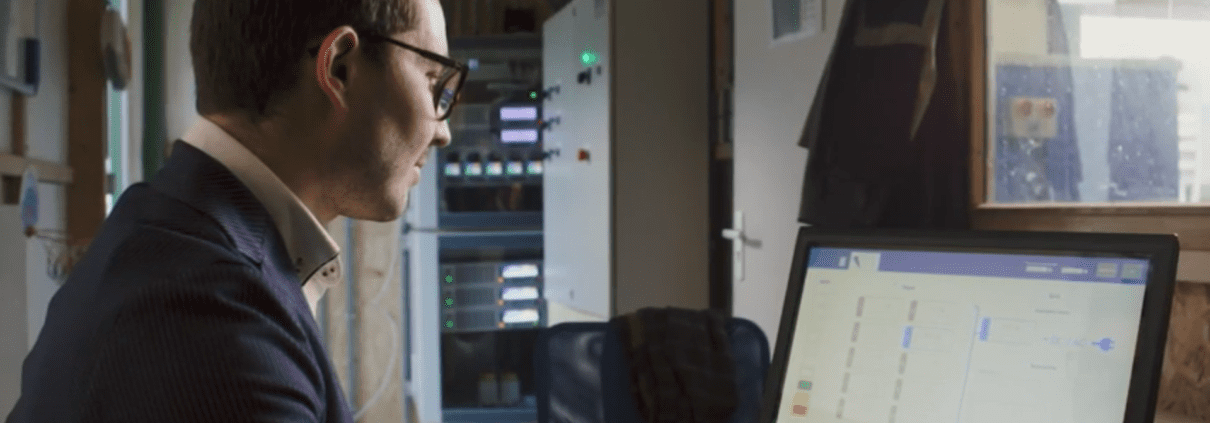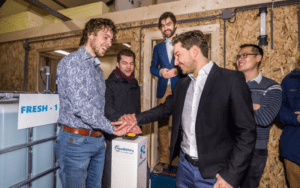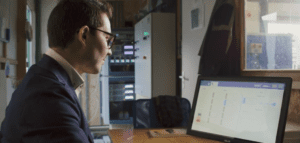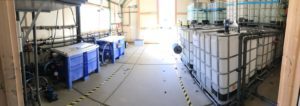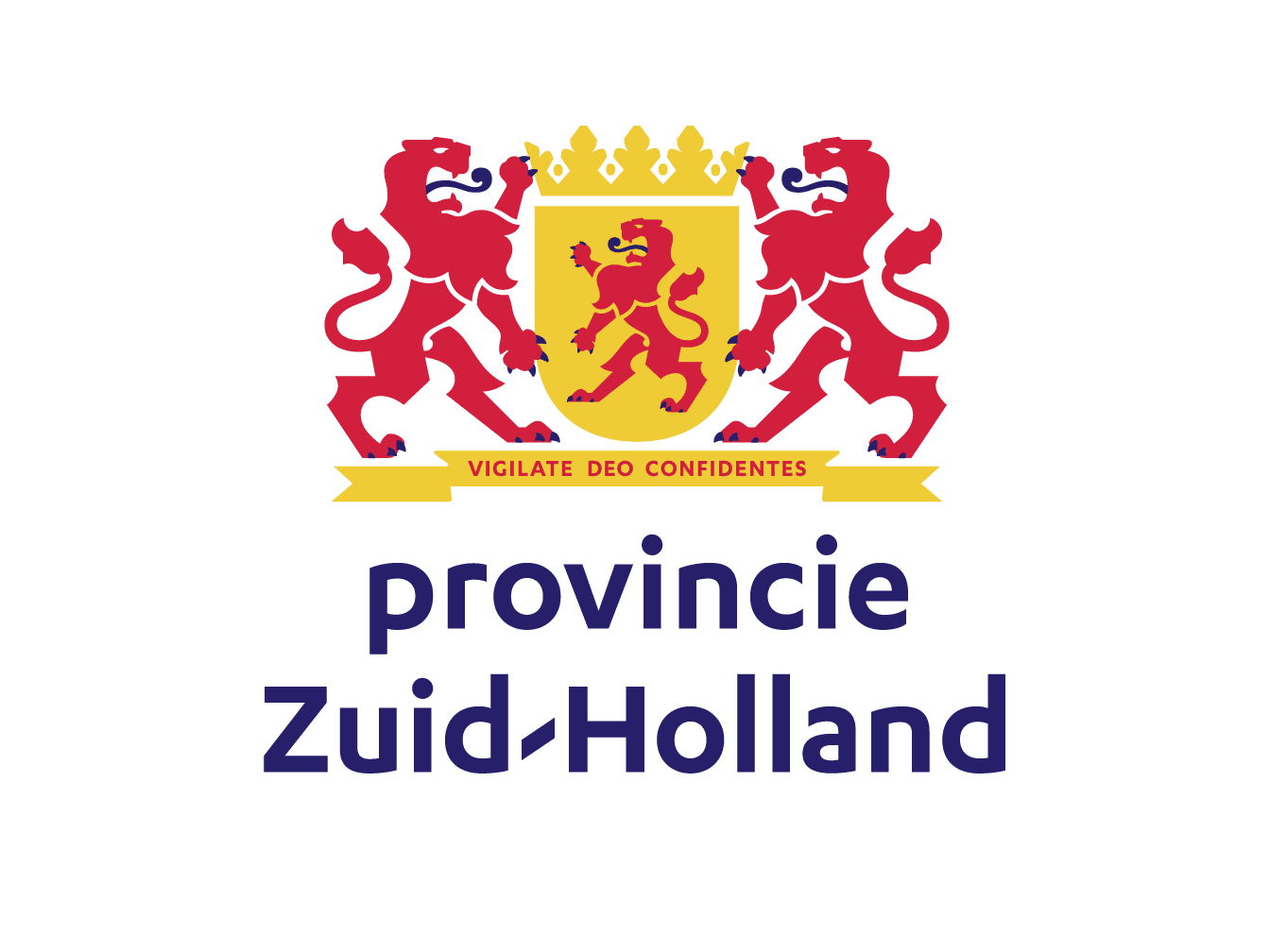Het avontuur van Aqua Battery op The Green Village
Aqua Battery bevindt zich al sinds 2017 op The Green Village, toen er nog niets anders aanwezig was dan het kantoor, Prêt-à-Loger, drie innovaties en project manager Willy Spanjer. Ze hebben projecten zien komen en gaan terwijl ze druk doorwerkten aan hun Blue Battery in de welbekende groene container. De afgelopen jaren hebben ze aan meerdere projecten gewerkt, met uiteenlopende partijen – van start-ups tot overheidsinstanties – en gebruikmakend van de smart grid, The Green Village en ons bijkomende netwerk. In een gesprek met Aqua Battery’s Juan Sebastián Álvarez – Project Manager Blue Battery Microgrid & Senior R&D Engineer – vertelt hij ons over het vierjarige avontuur op The Green Village en hun laatste project over de microgrid.
Om ons geheugen weer even op te frissen over hoe Blue Battery ook alweer op The Green Village is beland, neemt hij ons mee terug in de tijd. Aqua Battery is begonnen als een spin-off van Wetsus, European Centre of Excellence for Sustainable Water Technology, toen de blauwe batterij nog een nieuw en opkomend onderwerp was. “Wanneer je een onderzoeksvoorstel hebt en deze naar een hoger niveau wilt trekken, biedt Wetsus verschillende kick-off programma’s om je eigen project of bedrijf op te starten. Dit is hoe Aqua Battery tot stand kwam”, legt Álvarez uit. Al zoekende naar partners en een pilot locatie om hun eerste project te testen, dat zich destijds nog op een laboratorium niveau bevond, stuitten ze in 2017 op The Green Village.
“Het zou zonde zijn om een succesvolle pilot neer te zetten en dan geen verdere stappen te zetten door het te koppelen aan een elektrisch systeem.”
Eerste project over de microgrid
De vele lessen die getrokken werden uit dit eerste project vormden de motivatie om door te gaan: “Het zou zonde zijn om een succesvolle pilot neer te zetten en dan geen verdere stappen te zetten door het te koppelen aan een elektrisch systeem.” De volgende logische stap was om te zien hoeveel meer er bereikt kon worden met de Blue Battery. Dit motiveerde het team om partners en aanvullende subsidies te vinden voor een tweede project op The Green Village. Dit meest recent afgeronde project is een koppeling met de waterstofauto en kreeg de volgende naam: Een Duurzame en Lokale Elektriciteitsopslag in Microgrid. Het doel was om te demonstreren en monitoren hoe de Blue Battery en waterstofauto samenwerken in een microgrid omgeving.
De gedachtegang achter dit project is dat twee componenten elkaar kunnen aanvullen. De Blue Battery biedt energie opslag en –ontlading gedurende een langere periode, terwijl de waterstofauto daarentegen in korte pieken energie levert. “Als je bijvoorbeeld in een huis gebruik wilt maken van de waterkoker of wasmachine, creëer je korte uitschieters in het energieverbruik. De Blue Battery kan hier niet op anticiperen omdat het meer tijd nodig heeft om op te starten, maar de auto wel. Als je televisie kijkt of je laptop oplaadt, kan de Blue Battery juist perfect energie leveren omdat het stabiel is en langdurig in te zetten is.” Naast deze interactie wordt ook het omringende systeem onderzocht. Hoe beïnvloeden consumptie en productie deze twee onderdelen, maar ook: hoe maak je een systeem dat de vraag op basis van consumptie en productie begrijpt?
Álvarez legt uit: “Binnen een microgrid communiceren alle componenten in twee richtingen en zijn er drie essentiële onderdelen: energieproductie, -opslag en -consumptie. De grid-structuur is decentraal aangezien de drie onderdelen worden gecontroleerd door een lokaal communicatie apparaat dat tweerichtingsverkeer toestaat.” Het wordt duidelijk dat een goede samenwerking essentieel is en dat externe partijen een goede bijdrage kunnen leveren om dit project tot een succes te maken, waardoor Aqua Battery de leiding neemt in een consortium. Zo hebben ze contact met een oud werknemer van Alliander die recentelijk Zown heeft opgericht, een netwerkbeheerder bedrijfje. Ze hebben nu alle systemen bij elkaar om de individuele componenten in een microgrid te integreren. De samenwerking met de waterstofauto betekent inherent een samenwerking met de TU Delft, waar sommige profesoren ook al voor Aqua Battery werken.
“Dit project is daarom uniek omdat de keten van productie, opslag en consumptie volledig duurzaam en hernieuwbaar is.”
Nu het component opslag is voorzien, kan de focus verschoven worden naar productie en consumptie. Dit is waar The Green Village een rol speelt: “Ze hadden zonnepanelen op het DC kantoor, een energie consumerend bewoond huis en een terrein met bestaande state-of-the-art infrastructuur en technologie om alle soorten testen te faciliteren. Dit project is daarom uniek omdat de keten van productie, opslag en consumptie volledig duurzaam – vanwege het gebruik van alleen water, zout en waterstof – en hernieuwbaar is, dankzij de zonnepanelen. Daarbij is het project ook in Prêt-à-Loger geplaatst, dat op een hernieuwbare en duurzame wijze is gebouwd. De Blue Battery was niet alleen de eerste met de initiële testen, maar dit tweede project was ook uniek in Nederland en mogelijk heel Europa.”
Maar zoals bij elk onderzoek liggen knelpunten altijd op de loer. Samen met Firan (infra-specialist van Alliander) werken ze aan de bedrijfsanalyse om antwoorden te bieden op vragen als: wat is de huidige wetgeving omtrent microgrids in Nederland en waar kan het geplaatst worden en goed functioneren? Is het mogelijk om dit nieuwe systeem te na te bootsen in de praktijk? “Om dit product naar een volgend niveau te tillen werd een theoretisch model gebouwd en in een software programma geplaatst. Vanaf hier probeerden we data te simuleren om profielen te ontdekken en om het theoretisch model te vergelijken met het experimentele model in de nabije toekomst. Het model is gebaseerd op theorie, maar biedt toch een goede schatting van energieprofielen die we gezien hebben in het microgrid project.” Als je optimaal gebruik wilt maken van een Blue Battery is het goed om dichtbij een zonne- of windpark te zijn waar energie op een stabiele wijze wordt opgewekt. Met een toename aan windparken wordt het ook steeds gemakkelijker voor de Blue Battery om op meerdere locaties te werken.
Ver van huis
Terwijl dit alles plaatsvindt tijdens de koudste maanden in Nederland, bevinden Álvarez en zijn collega’s zich op een afgelegen Italiaans eiland genaamd Pantelleria waar ze werken aan een ander Europees project: “Het is een prachtige locatie, maar je komt er niet zomaar!” Samen met partners verspreid over heel het continent werken ze aan de laatste fase van het Horizons 2020 BAoBaB project, gerelateerd aan een demonstratiepilot voor de Blue Acid/Base Battery – een geüpgradede versie van de Blue Battery, doordat het twee keer zo krachtig is, maar veel kleiner. Dit zijn spannende tijden op de Middellandse Zee nu ze de data aan het verzamelen zijn om een rapport voor de Europese Commissie op te bouwen. Gelukkig heeft Aqua Battery ook meer plannen in de pijplijn liggen bij The Green Village. Álvarez legt uit: “Op het moment denken we eraan om de Blue Battery te koppelen aan het DC-grid dat The Green Village biedt. Dit kan interessante kansen bieden doordat verminderde conversie leidt tot minder energieverlies.”
Handen uit de mouwen op The Green Village
Gedurende al deze avonturen is de samenwerking met The Green Village altijd sterk geweest. Ondanks dat hindernissen onvermijdelijk zijn, ziet Álvarez het als een unieke omgeving waar gemakkelijk contact gelegd kan worden en iedereen altijd zijn beste beentje voor zet: “Ik kan nog zo voor me halen dat ik bij aankomst twee eigenaren van een innovatie op de WaterStraat ontmoette. Ze waren zelf aan de slag gegaan met de innovatie en het harde werk aan het verrichten. Hier hadden ze ook iemand voor kunnen inhuren, maar ze wilden het liever zelf doen. Dat zegt veel vind ik.” Niet lang daarna, in december van dat jaar, bevond Aqua Battery zich op haar eerste evenement op The Green Village. Álvarez licht toe: “Mij werd gevraagd de Blue Battery te presenteren. Naast het feit dat dit een bijzonder spannend moment was omdat ik de allereerste wereldwijde Blue Battery op pilotschaal mocht presenteren, was het ook een perfect moment om te netwerken met interessante contacten die ik anders niet zo makkelijk had ontmoet.”
Teamwerk is als een kaartenhuis
Tijdens het interview wordt het al snel duidelijk dat teamwerk uitermate belangrijk is voor Álvarez. De Blue Battery had nooit bestaan zonder het gehele team achter Aqua battery, of de vele partners waarmee ze hebben samengewerkt, zoals REDstack, Zown, Firan, Dot Robot en verschillende partijen binnen de TU Delft. Álvarez heeft ze hoog in het vaandel zitten, wat duidelijk wordt wanneer hij uitlegt hoe het belangrijk het is om verschillen in je voordeel te gebruiken: “We hebben misschien wel verschillende perspectieven, maar dat brengt alleen maar het beste in ons naar voren wat vervolgens weer gecombineerd kan worden in het project. Niemand wordt achtergelaten, het is net een kaartenhuis: iedereen speelt een essentiële rol.”
Al vragend naar zijn meest dierbare momenten op The Green Village benadrukt Álvarez nogmaals dat hij dan direct denkt aan de momenten waarop ze iets bereikten als een team. Allereerst benoemde hij het gevoel alsof ze een marathon hadden gelopen toen ze hun eerste project in november 2017 hadden gerealiseerd. Dit succes gevoel dook weer op in Augustus 2020 na maanden van hard werken toen de inauguratie van het microgrid plaatsvond: “Het was zo’n mijlpaal toen we het systeem werkende kregen. Alles vond online plaats, we drukten op de knop en alles begon te werken.”
Sinds dit bijzondere moment is het microgrid project tot zijn einde gekomen, maar Aqua Battery’s tijd op The Green Village is verre van voorbij! Álvarez en zijn collega’s zijn druk bezig met het rapport om hun bevindingen te bundelen en dit zal binnenkort openbaar gemaakt worden. Gelukkig nemen we geen afscheid, maar zeggen we tot ziens!
Door Caitlin Eagles


